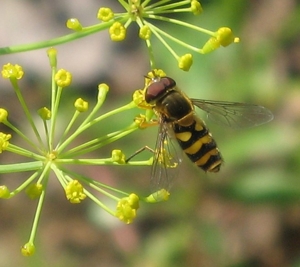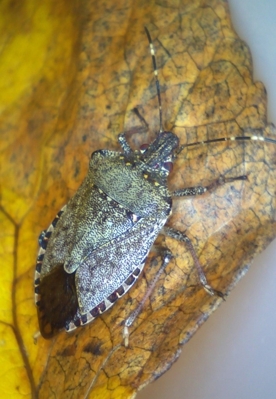Ana Legrand
IPM Assistant Extension Professor
Education & Experience
University of Maryland, PhD in Entomology, 1999.
Cornell University, BS with high honors in Biology, 1991.
Research Interests
My research interests focus on tritrophic level interactions, insect behavior, and ecology of insect predators and parasitoids. My goal is to contribute to the science of biological control in particular through the study of how plant characteristics influence the behavior and efficacy of insect natural enemies. Work in my lab is examining the use of insectary plants for beneficial insect conservation, the plant feeding preferences of vegetable insect pests and the egg parasitoid species attacking the brown marmorated stink bug in Connecticut.
Current Projects:
- Using cut flower plants as insectary plants to enhance biological control of vegetable pests.
- Lab rearing protocols for the brown marmorated stink bug (BMSB) Halyomorpha halys and BMSB egg parasitoids surveys.
- Survey of parasitoids attacking the cabbage caterpillar pest complex.
- Documenting attraction of insect pollinators by drought-resistant plants.
Selected Research and Extension Publications:
Legrand, A. 2016. Survival of adult Japanese beetle Popillia japonica exposed to Metarhizium brunneum (Petch) F52. 2015 Annual UConn Turfgrass Research Report. UConn Department of Plant Science and Landscape Architecture.
Legrand, A. 2015. Using beneficial nematodes for turfgrass insect pest management. UConn IPM Program Fact Sheet. University of Connecticut.
Legrand, A. 2015. Use of peonies to conserve spring tiphia parasitoids of white grubs: a three year study. 2014 Annual UConn Turfgrass Research Report. UConn Department of Plant Science and Landscape Architecture.
Obeysekara, P.T. and A. Legrand. 2014. The influence of host species and location in the host detection ability of Tiphiid (Hymenoptera:Tiphiidae) Parasitoids. Environmental Entomology: 43(6): 1594-1602. https://doi.org/10.1603/EN13275
Obeysekara, P. T., and A. Legrand. 2014. Analysis of Tiphia parasitoids pre-ovipositional behaviors and of their scarab host defensive responses. Biological Control 69: 97-106. https://doi.org/10.1016/j.biocontrol.2013.11.008
Obeysekara, P.T., A. Legrand and G. Lavigne. 2014. Use of herbivore-induced plant volatiles as search cues by Tiphia vernalis and Tiphia popilliavora to locate their below-ground scarabaeid hosts. Entomologia Experimentalis et Applicata (150):74–85. http://onlinelibrary.wiley.com/doi/10.1111/eea.12138/abstract
Legrand, A. 2014. Plants that attract beneficial arthropods: a list of plants documented to attract natural enemies of pests. IPM Program Fact Sheet. University of Connecticut Cooperative Extension System. Updated March 2014.
Courses
SPSS 1125 – Insects, Food and Culture, Fall semester, odd-years
SPSS 3840/SAPL 840 – Integrated Pest Management, Spring semester
SPSS 3830 – Horticultural Entomology, Fall semester, even-years
Professional Associations
Entomological Society of America
University of Connecticut Association of Latino Faculty and Staff



| ana.legrand@uconn.edu | |
| Phone | 860-486-0869 |
| Fax | 860-486-0682 |
| Mailing Address | 1390 Storrs Rd., Unit 4163 Storrs, Connecticut 06269-4163 |
| Office Location | Agricultural Biotechnology Lab (ABL) 320E |